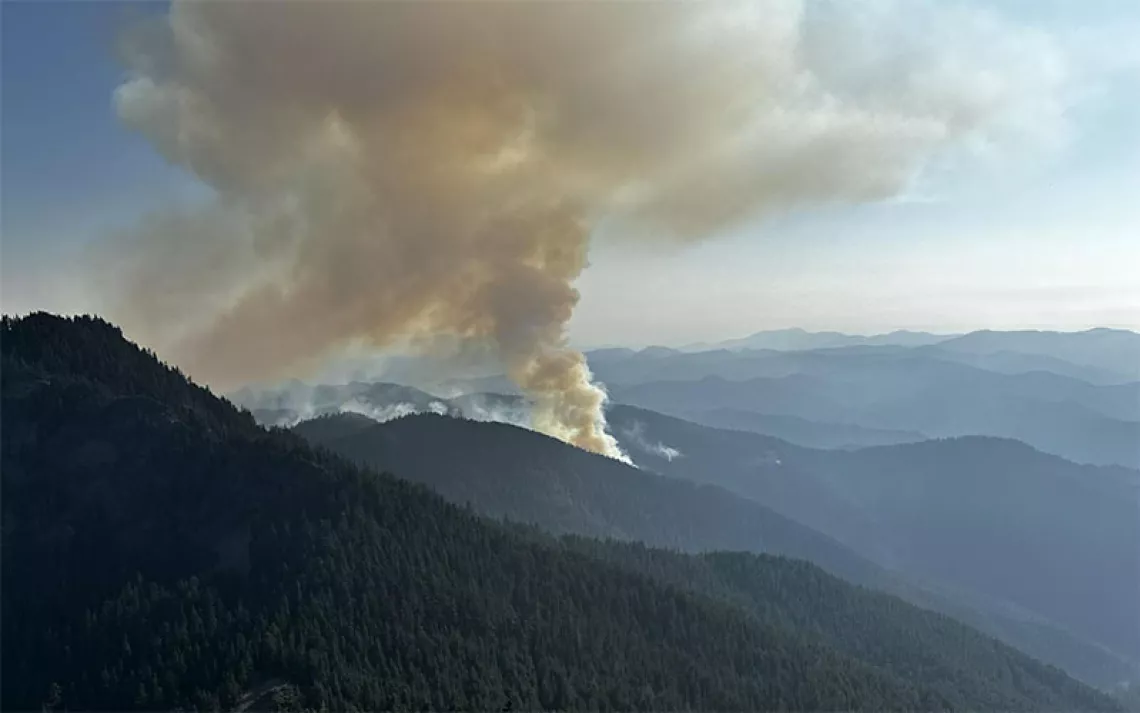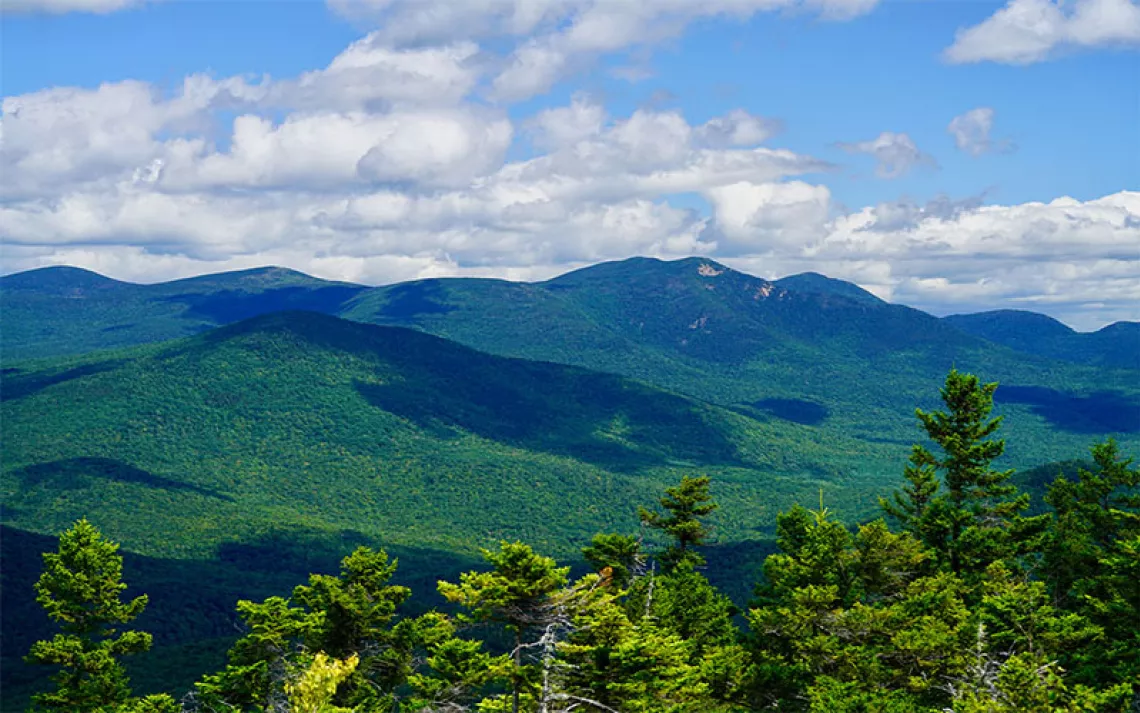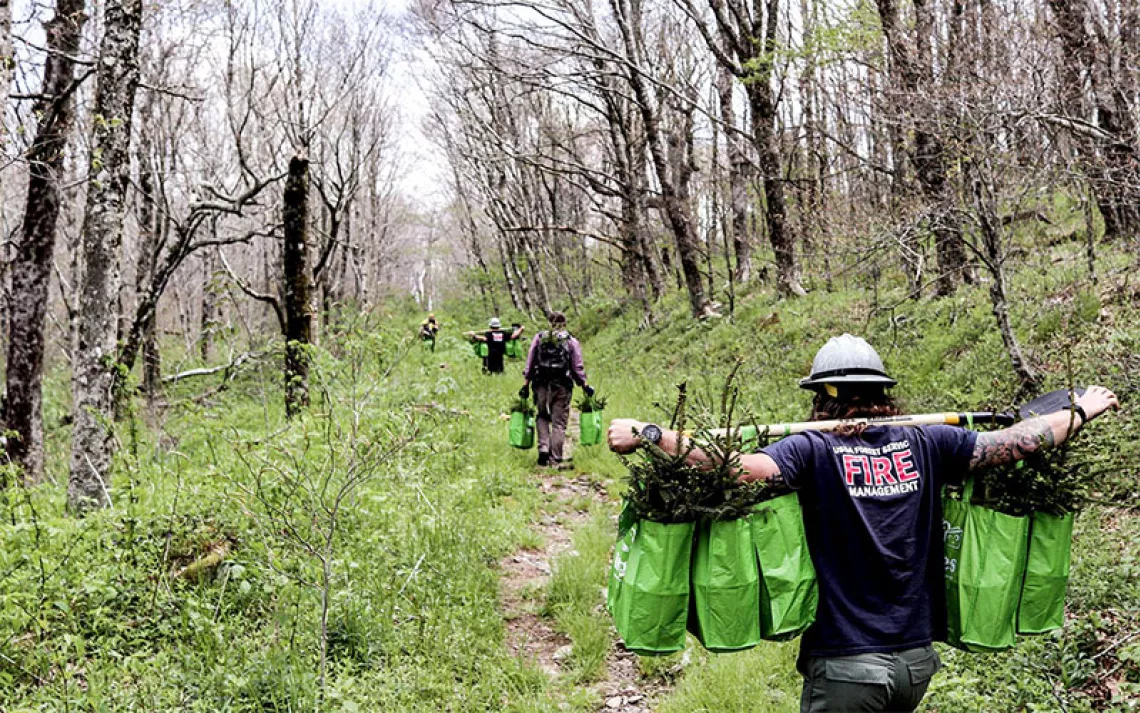More Than a Walk in the Woods
An emerging mindfulness practice, forest bathing is exactly what it sounds like
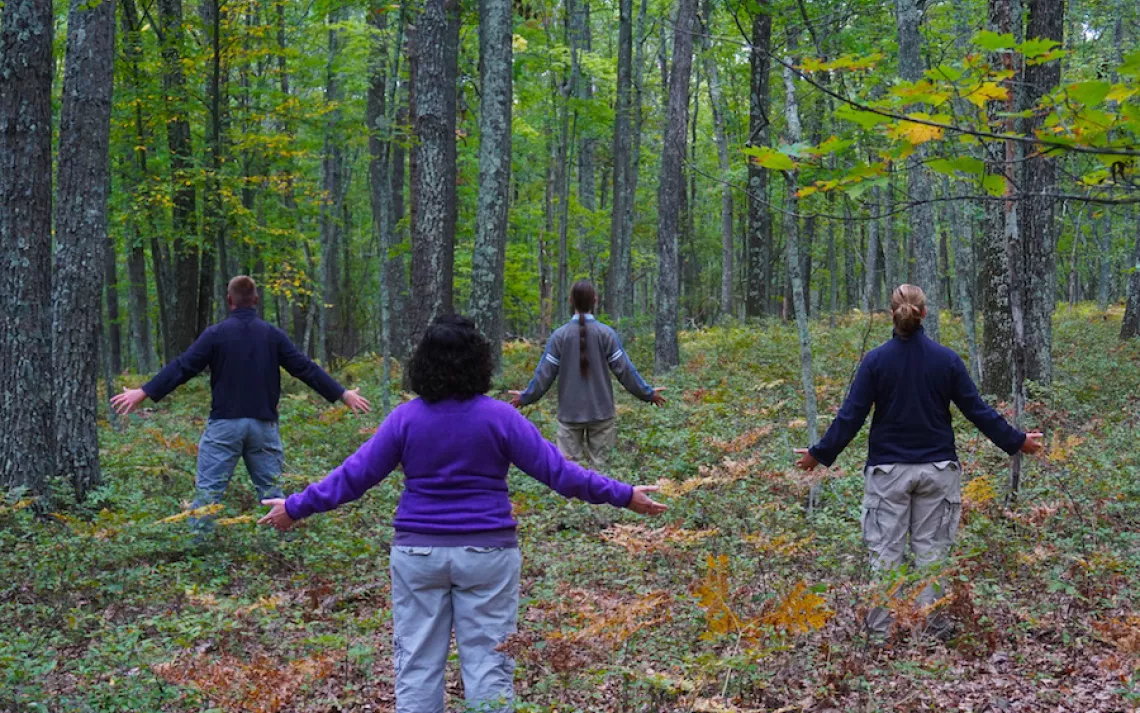
Photos courtesy of Amos Clifford, Association of Nature and Forest Therapy Guides and Programs
Naturalist and Sierra Club founder John Muir once said that in every walk with nature, one receives far more than he or she seeks. Mounting interest in the Japanese practice of shinrin-yoku, which translates literally to “taking in the forest atmosphere,” or “forest bathing,” would seem to indicate that people are increasingly taking Muir’s sentiment to heart.
In 1982, the Japanese Ministry of Agriculture, Forestry, and Fisheries officially coined the practice of going to the forest to soak in the sights, sounds, and smells as "forest bathing." The inspiration was Shinto, a religion based specifically around devotion to the landscape of the Pacific island nation, as well as the principle that spirits are embodied in nature. The practice of forest bathing has since taken off in Japan; today, the ministry actively operates 62 (and counting) designated forest therapy bases—forested areas whose relaxing effects “have been observed based on scientific analysis conducted by a forest medical expert—and roads, or similarly sanctioned walking paths.
The idea is simple: In order to take in the forest atmosphere, one must simply visit a natural area and reap the restorative benefits. Yes, even looking at a forest environment can provide health benefits.
“It’s about moving slowly and using our senses to connect with the world around us,” says Amos Clifford, founder and director of the Association of Nature and Forest Therapy Guides and Programs, in Santa Rosa, California, the sole U.S certifying body for forest bathing. “It’s about being fully here, and being fully touched by what's around you.”
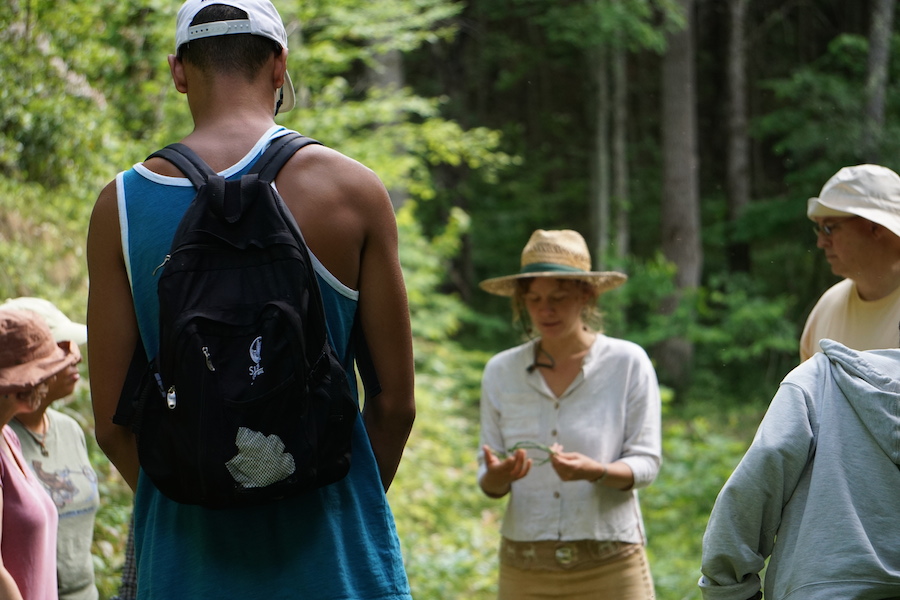
However, Clifford’s programs involve more than just a walk. Strict forest-bathers such as him recommend that a guide be present in the beginning of one’s practice, so as to help beginning forest-bathers relax and gain introspective connection to the surrounding world. This is forged, Clifford says, through specific and intentional language meant to slow clients down and prompt engagement of all the senses. Think guided meditation.
“Slowing down is about being where you are, knowing where you are, and experiencing the felt sense of that place in that moment,” says Clifford. “When you do that, you have a very rich experience.” Clifford notes that this first walk is so immersive that in a singular three-hour forest bathing session, program participants may only cover a quarter of a mile. To provide such an experience, Clifford’s guides undergo an intensive six-month certification course. Training kicks off with a week-long retreat, followed by a mentored practicum.
Despite its simplicity, forest bathing, Clifford says, is a practice intended for those serious about improving their immune systems and mental health, and reestablishing their connection with the natural world. It is more, he assures, than getting from point A to point B.
“No matter how experienced you are, you will experience nature a completely different way [through forest bathing],” he says. “The forest itself is the therapist; the guide is not.”
Clifford, who previously worked as a wilderness guide for Outward Bound-style programs and ran a youth and family counseling organization, first experienced this profound connection to the forest while participating in a vision fast—i.e., a three-to-four-day ceremony that involves fasting alone in a wilderness setting. Clifford says his 2011 fast led to his desire to make such a significant nature connection accessible to everyone. So the following year, after finding an article on shinrin-yoku, he founded the association. “I came to a completely different experience with nature that I had never had before,” he says, noting that if we as a species don’t cultivate our connectedness to nature and learn how to behave congruently, we are thus “not viable."
Today, more than half of the human population lives in urban areas, a statistic expected rise to 70 percent by 2050. According to a 2001 survey sponsored by the EPA and published in the Journal of Exposure Analysis and Environmental Epidemiology, Americans spend 87 percent of their time indoors and 6 percent in an enclosed vehicle.
“I think it’s important for people to remember that there is a growing proportion of urbanization, which means a greater disconnection to the land,” says Ben Page, a Los Angeles-based forest therapy guide who completed Clifford’s certification in the fall of 2015.
As noted in a 2015 paper in the Journal of Landscape and Urban Planning, this shift to urban living environments has not only decreased exposure to the natural world; it has also provided “evidence of an increase in the worldwide prevalence of mental disorders,” which may be “linked with decreased exposure to nature, causing changes in psychological functioning.”
The now-surging interest in forest bathing, Clifford believes, likely speaks to a societal need to disconnect from the constant barrage of social media and put the phone down, and to the trend of becoming more involved in both personal and environmental health. Taking a cue from Japan, he ultimately hopes to further integrate forest mental therapy into the U.S. health-care system.
In a 2010 study by the Center for Environment, Health, and Field Science at Chiba University in Japan, researchers studied 280 subjects across 24 Japanese forests and urban environments and found that the forest setting promoted lower concentrations of cortisol as well as lower pulse rate and blood pressure. The result? Improved cognition and mood, increased focus and energy, reduced stress, and even increased immune system function.
But forest bathing, as Page notes, isn’t solely about the health benefits—it also promotes conservation of the natural world.
“Sometimes when people come into the practice for the first time, they think, ‘I want to be healthy,’” he says. “It’s interesting to see the growth and awareness how our health is in balance with the health of nature. If nature isn’t healthy, we aren’t healthy.” Page further promotes this belief by donating a dollar to the National Forest Foundation for every person he guides, to plant one tree.
“Conservation is just one piece of the pie that goes into fixing the ecosystem; another piece is emotional,” Page says. “Thinking, ‘I really love this; I love having a relationship with the land’ can prompt someone to do a variety of things for the earth.”
Julia Plevin, who leads a forest bathing Meetup group in the San Francisco Bay Area, also notes an increase in awareness of the human/nature connection among fellow forest bathers.
“Since the industrial revolution, humans have been trying to overcome nature, to extract from it, and that's just not working,” Plevin wrote in an email. “It’s why we are sick and stressed. So it makes sense that people feel less stressed when they spend time in nature. I see forest bathing as an important first step in getting people realigned with nature.”
Echoing the words of Muir, Clifford emphasizes that people protect what they love. “When we’re in a connection with nature, we learn profoundly that we’re connected in a web of interdependency.”
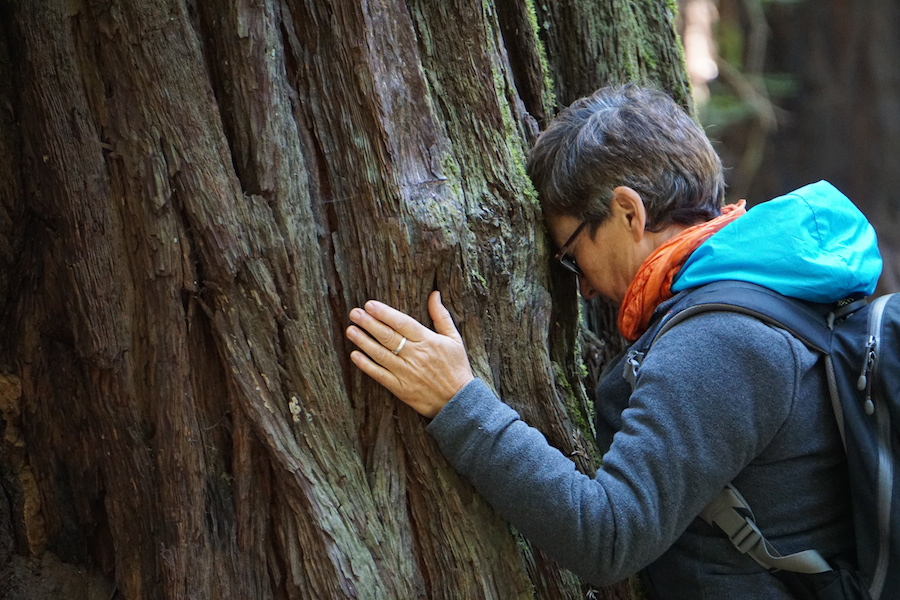
 The Magazine of The Sierra Club
The Magazine of The Sierra Club

